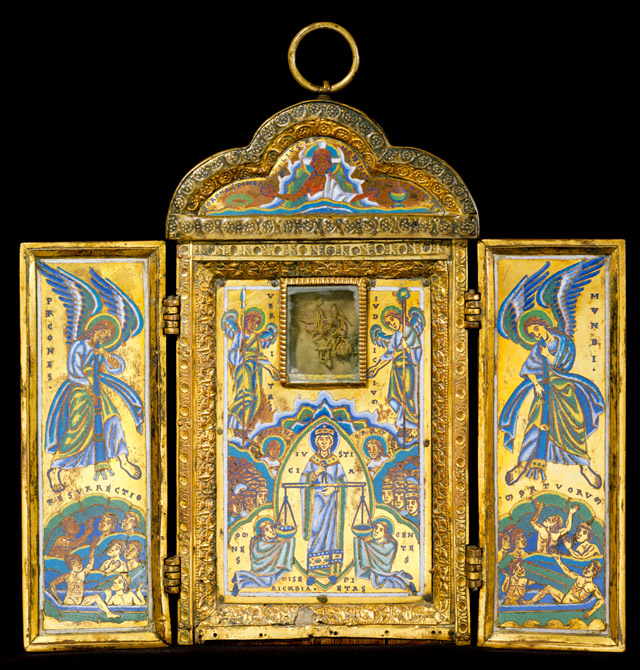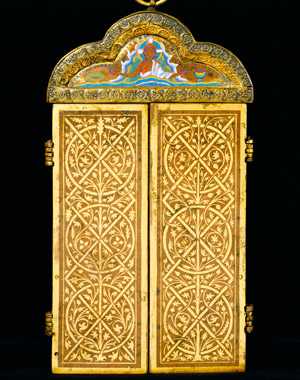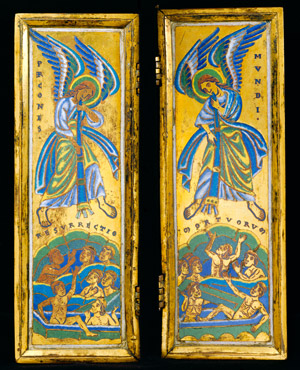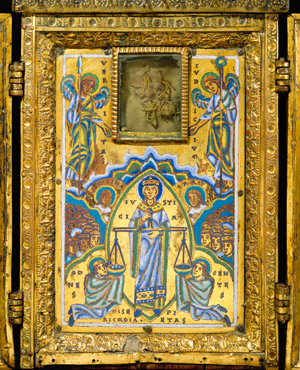Triptych Reliquary of the True Cross
Private Collection, London

 Select the image to zoom
Select the image to zoom
The Guennol Triptych, named after one of its former owners, was made by a leading goldsmith workshop in the Mosan region, the area between the Meuse and Rhine rivers where wealthy monasteries and readily available natural resources such as copper and tin created a fertile ground for the production of fine metalwork. While the identity of the master and the exact location of the workshop responsible for the triptych's execution cannot be determined with certainty—Stavelot, Maastricht, and Liège have all been suggested as possible locations—it has generally been associated with Godefroid of Huy, one of the most important artistic personalities of the region during the second half of the twelfth century.
The triptych's elaborate iconographic program is intimately tied to the relic of the True Cross—and possibly other relics of Christ's Passion—once displayed behind rock crystal in the cavity at its center. As the main instrument of Christ's Passion and vehicle for mankind's salvation, the Cross of Christ played an important role in medieval eschatology: it was interpreted as "the sign of the Son of Man in heaven" (Matt. 24:30), heralding Christ's Second Coming. The triptych's iconography needs to be understood in those eschatological terms: the wings portray two trumpet-blowing angels, awaking the dead to the Last Judgment. Accompanying inscriptions identify them as "heralds of the world" (praecones mundi) and the scene below as the "resurrection of the dead" (resurrectio mortuorum). The triptych's center panel depicts in its lower half the figure of Justice (iustitia). Flanked by personifications of Prayer (oratio) and Alms-giving (elemosyna), she is surrounded by "all nations" (omnes gentes) awaiting Christ's judgment. The scales of judgment are held in balance by the kneeling personifications of Mercy (misericordia) and Piety (pietas) at her feet. Above, two angels carry the Holy Lance and Holy Sponge. With their free hands, they support the rock crystal at their center, thus presenting to the beholder the relic(s) contained in it. Two accompanying inscriptions further label the angels as Truth (veritas) and Judgment (iudicium), making them witnesses to Christ's Passion and heralds of his Second Coming. Completing the triptych's program, Christ appears in half-figure in the lunette above the central panel as the "son of man" (filius hominis). He is flanked by images of the "crown of thorns" (corona spinea) and "jar of vinegar" (vas aceti), thus completing the display of instruments of Christ's Passion.
The back of each of the triptych's wings features a gilded copper plate exquisitely worked in vernis brun, a decorating technique for which Mosan artists were widely known and admired throughout the Middle Ages.







